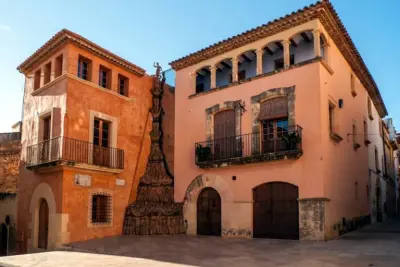A stroll
A stroll through our history
Altafulla’s origins can be traced back to medieval times, in the mid-11th century. It was located on a hill that slopes gently towards the Mediterranean Sea, where, together with other fortified hills along the line of the river Gaià, it formed the southernmost border of the County of Barcelona. The elevated position of the locality signified a certain displacement concerning the original Roman or late-Roman villa located in Els Munts, which provided greater protection with respect to the coast. Thanks to this position, the fortress dominated the surrounding area and, at the same time, the Via Augusta became once more the great communication artery of the territory.
The castle of Altafulla still offers a privileged and pre-eminent position, faithful to the conditions of the feudal occupation of the 11th century, as if it had sprung from the very rock on which it now rests. The building follows a triangular or trapezoidal plan and revolves around an inner courtyard, which originally served as a tower, to which other structures were added at a later date. The building retains the appearance of a fortification and is flanked by several towers with battlements and a serrated gate, elements that recall a certain military functionality.
CULTURAL ASSET
Cultural Asset of Interest and World Heritage Site
Altafulla is a well-preserved village, respectful of its protected environment, with a mild and warm climate. Altafulla is like an island between the metropolitan area of Barcelona, Tarragona and the mass tourism of the Costa Daurada. It combines the best in leisure activities located just a few minutes away and the peace and quiet of an ideal place to live, work, visit and enjoy. Its culture, quality of service, natural environment and excellent hospitality are the outstanding qualities that the village offers its tourists, all of which complement its main attractions: its people, the beach, and the sun.
The short distances to cities and places of great interest such as Barcelona, the Roman Tarraco, the Costa Daurada, Port Aventura, the Ebro Delta, the routes of Gaudí and Picasso, the Cistercian Route, the gastronomic visits and the fine wines and cavas of Priorat, Penedès, Terra Alta and Baix Gaià, make Altafulla the beginning and end of a variety of routes that will bring you closer to this part of Catalonia. The village was declared a cultural asset of national interest in 1998 by the Generalitat de Catalunya, thanks mainly to the Vila Closa and its surrounding streets. Two years later, in 2000, it was also declared a UNESCO World Heritage Site thanks to the Roman villa of Els Munts.
Our present. Today, the medieval urban structure can be followed through the village’s old quarter, known as the Vila Closa, a name that hints at its original walled enclosure. It is characterised by steep streets and several interesting sights, such as the passage of Santa Teresa or the parish church of Sant Martí. This whole medieval ensemble, which boasts facades of stately homes built in the 18th century, together with its squares, gives the place the tranquillity and elegance that have earned this village the designation of a site of national interest. It was declared as a historic-artistic site by the Catalan government in 1994.
The medieval perimeter of the walled enclosure surrounding the castle of Altafulla was surpassed by the urban growth in the 17th and 18th centuries, when the village expanded towards the sea. The Vila Closa refers to the part of the village which was originally enclosed by a medieval wall, of which a section, two towers and three gates, which gave access to the village and which are now restored, have been preserved. If we look towards the sea, where we find today’s maritime quarter, the streets are already wider and lie parallel to the Via Augusta. They are proof of a rich and prosperous village, featuring the stately homes of a prominent merchant oligarchy along Botigues de Mar promenade.
population
With three population centres
Altafulla is divided into three distinct areas: Altafulla (centre), where most of the inhabitants live all year round; Altafulla (beach) or maritime district, made up of many apartments where tourists spend the summer, and Brisas del Mar, located to the north of the town and accessible by the road that links Torredembarra to Riera de Gaià. The scenic Old Town and its surrounding area and the beach are separated by the Marquès de Tamarit promenade, the old N-340 road, and the RENFE railway line, which stops at the Altafulla-Tamarit station. The 2018 municipal census showed a population of 5,184 inhabitants.
At the highest point of the village stands the hermitage of Sant Antoni. It was built in 1717 largely thanks to the donations of Baltasar Rabassa, a local fisherman. On the opposite side of the village, in the area known as Els Munts, lie the remains of a Roman villa. Excavations began in 1967 and the many artefacts found, including a series of marble statues, are now housed in the National Archaeological Museum of Tarragona.
MEDITERANEAN
By the Mediterranean Sea, on the Costa Daurada and in the Baix Gaià
The village is located on the Mediterranean coast, on the left bank of the river Gaià, between the mountains of Sant Joan and Sant Antoni, at an altitude of about 80 metres overlooking the sea. The municipality is limited to the north by Riera de Gaià and Nou de Gaià, to the east by Torredembarra, to the south by the Mediterranean and to the west by Tarragona. The municipality of Altafulla includes the neighbourhood of Brisas del Mar, located 1.5 km from the village centre.
Altafulla celebrates its minor local festival dedicated to Sant Antoni on the 11th of September and its main local festival, dedicated to its patron saint Sant Martí, on the 11th of November. The Witches’ Fair at the end of June, the Artisans’ Fair in mid-August and the Way of the Cross on the evening of Holy Wednesday are also highlights of the year. Altafulla boasts over twenty cultural and sporting organisations that help liven up the village. Film club and jazz sessions are held at least once a month.
CHURCH
An image from a postcard
The parish church is dedicated to Sant Martí. It was built between 1701 and 1705 in neoclassical style. It has a Latin cross floor plan and boasts three naves and a belfry. On the façade, there is an image of Saint Martin of Tours. The church has an unfinished square bell tower. Although it suffered considerable damages during the Civil War, it still preserves a baroque altarpiece from 1745. Altafulla celebrates its main festival on the 11th of November, the festival of Sant Martí. The castle of Altafulla is in a very good state of conservation, as it was reconstructed from 15th-century plans. The building possesses an irregular polygonal shape with the appearance of a fortress. Although the interior has been changed several times, the original courtyard and a Renaissance gallery have been preserved. Nowadays, the medieval urban structure can be traced through the old village centre, known as the Vila Closa, a name that alludes to the walled enclosure.
The Vila Closa
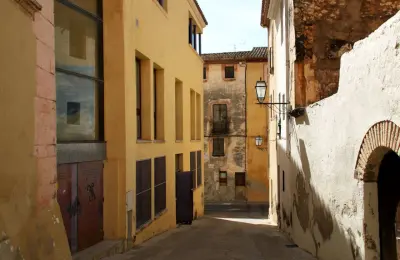
The church square
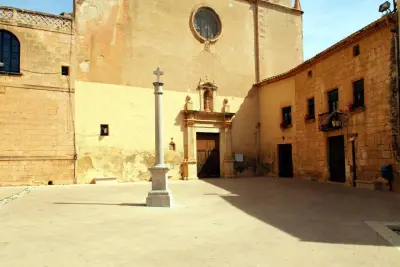
The Plaça del Pou
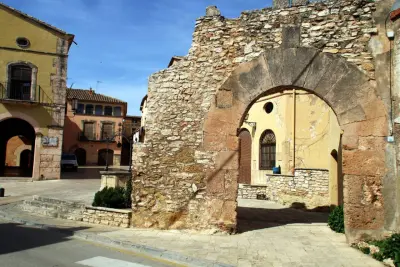
Botigues de Mar
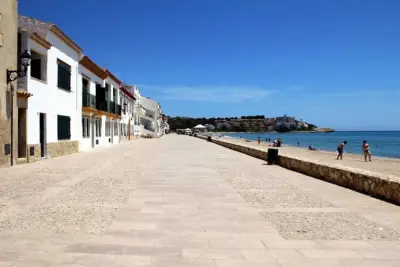
The Roman Villa of Els Munts
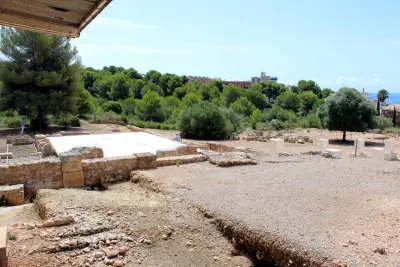
Carrer del Forn
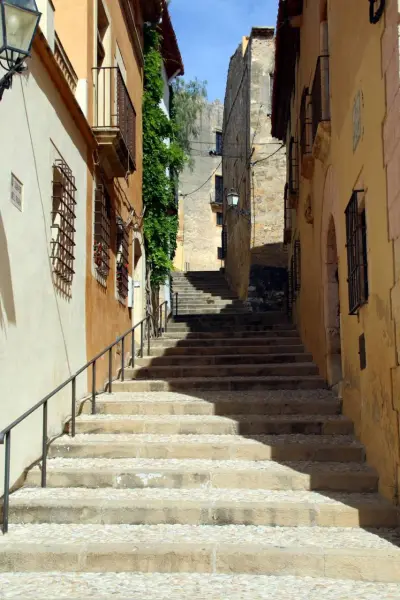
The Placeta
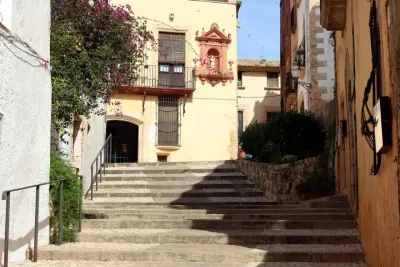
The Plaça Martí Royo
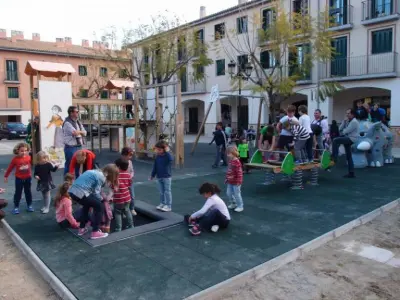
The castle of Altafulla
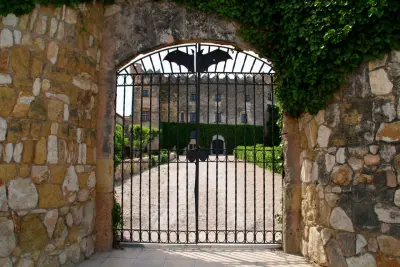
Sant Martí Church
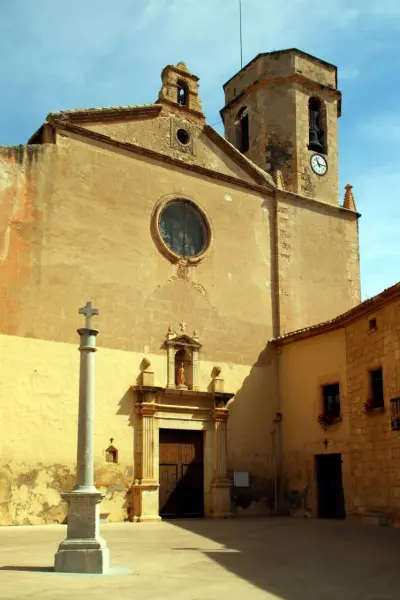
The Forum
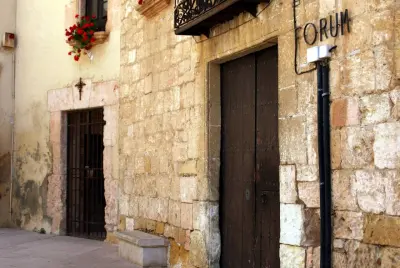
Casa de la Mare de Déu
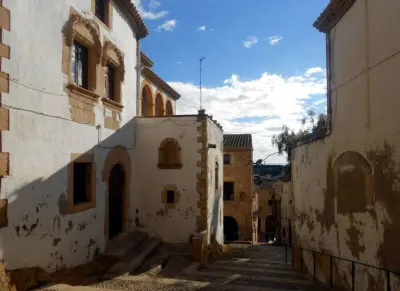
Ca l’Ixart
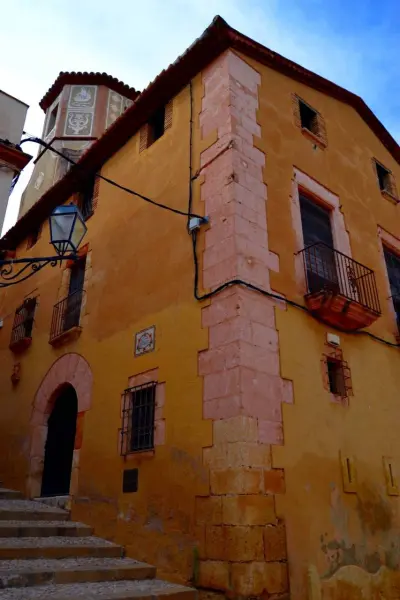
La Casa Gran
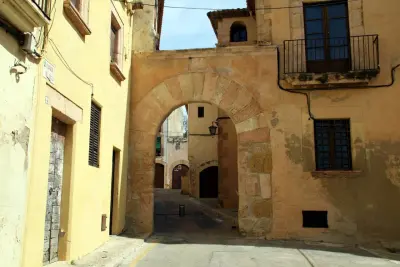
Can Robert
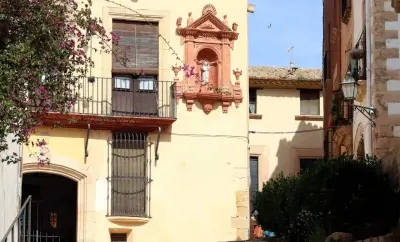
The Sant Antoni hermitage
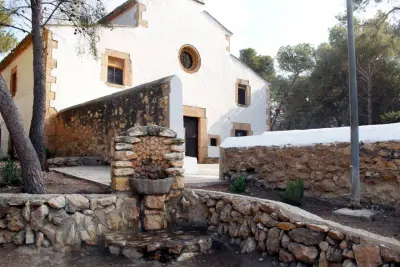
The Old Walls
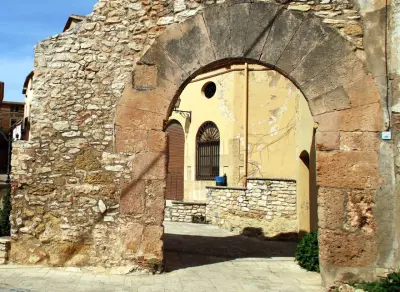
Monument to the Castellers
